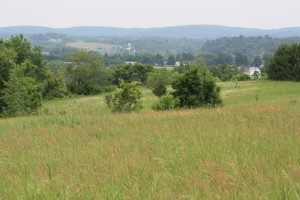Before I had the good luck – and the good sense – to marry a wildlife biologist, I never knew there were so many places where a person might take a walk.
Sure, I knew of a few state parks and faraway national parks. But in Lake Mills, if I wanted to be alone with the red-winged blackbirds, I settled for walking the gravel shoulder of Faville Road, where cars only occasionally zoomed by at 55 mph, and only one farm dog regularly chased me.
If I had looked at a county map, I might have seen several irregularly shaped green blobs within an easy drive of my home: Lake Mills Wildlife Area, Waterloo Wildlife Area, Jefferson Wildlife Area. On a larger map, I might have seen differently shaded sites: state natural areas, national wildlife refuges, waterfowl production areas. Or maybe not. I might have glanced at those odd brown and greenish blocks and assumed they were for someone else, not for me.
What I didn’t know was that, as a citizen of Wisconsin and the United States, I was co-owner of these lands. “Public lands” belong to the public, and that means you and me.
The types of federal, state, and local public lands are numerous and varied. I made a list off the top of my head, which is almost certainly incomplete. Some areas (notably, those that have “wildlife” in the name) are designated hunting grounds. But outside of hunting seasons,* these are ideal places to watch birds, pick berries, or just explore.
Not all public lands provide easy walking, especially if they are managed for the benefit of wild creatures and native plants. A few areas are completely closed to public access, sometimes to protect migrating birds or rare species; if so, you’ll see signs to that effect. Most areas, however, are open to foot travel, but you’ll want to leave your shorts and flip-flops at home. You might or might not find trails, which might or might not be dry and free of fallen trees or brush. You might or might not be able to walk more than 100 yards. But you’ll never know unless you look.
The first time you visit an area, consider it a scouting trip. Maybe you’ll find a place to walk, or maybe you’ll just take a nice drive. At the very least, you’ll find out what’s there. Winter is an ideal time for scouting, especially in wetlands, because areas that might be underwater in April are frozen in February.
So don’t wait for spring to explore the lands that belong to you. Take a look at a map, and see if there’s anything green that you’ve been missing.
*Hunting seasons are generally in the fall, except for spring turkey season – check your state’s hunting regulations on line.

